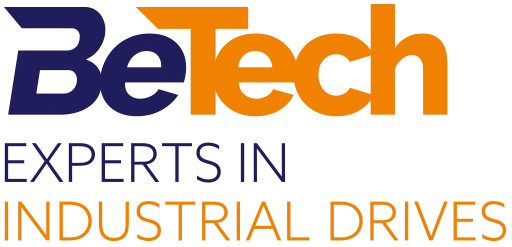In this article we will discuss the different types of pumps, their purposes and the industries they are typically find. We will also discuss how variable frequency drives are used with pumps for accuracy, energy saving, efficient management and avoiding downtime.
These pumps operate using centrifugal force to impart kinetic energy to fluids, typically low-viscosity liquids. The fluid is accelerated outward into a diffuser or volute casing, which converts kinetic energy into pressure energy.
Purposes: They efficiently handle large volumes of liquid and are used for fluid transfer through piping systems.
Industries: They are used in water treatment, agriculture, and chemical processing.
These pumps transfer a fixed amount of fluid from the inlet to the discharge port with each cycle, ensuring a consistent flow rate4. They are suitable for high-viscosity fluids and generating high pressure.
Purposes: They move a precise volume of fluid regardless of pressure and are used when consistent flow rates are required.
Industries: They are used in oil and gas, food processing, and pharmaceuticals, as well as in hydraulic systems and for handling sensitive fluids.
These pumps use a flexible diaphragm to move fluids, creating a vacuum to draw fluid into the pump chamber and then expel it.
Purposes: They can handle a wide range of fluids, including abrasive, corrosive, and viscous substances, as well as fluids containing solid particles. They are suitable for demanding and sensitive pumping applications.
Industries: They are used in chemical processing, water and wastewater treatment, and for handling hazardous materials.
These pumps use one or more screws to move fluids along their length.
Purposes: They handle a wide range of fluids, including those with lubricating properties, and provide a continuous, non-pulsating flow.
Industries: They are used in oil and gas, chemical processing, and wastewater treatment.
These pumps compress and release a flexible tube to move fluid, and the fluid does not come into contact with any moving parts of the pump.
Purposes: They are suitable for applications requiring hygienic or sterile conditions and for handling aggressive, abrasive, or viscous fluids.
Industries: They are used in pharmaceuticals, food and beverage processing, and biotechnology.
These pumps use a helical rotor within a stator to create cavities that move fluid.
Purposes: They handle fluids of various viscosities, including thick, abrasive, or aggressive media.
Industries: They are used in wastewater treatment, food and beverage, chemical processing, and oil and gas production.
These pumps are designed to transfer fluids from drums, barrels, or similar containers.
Purposes: They prevent spills and contamination when transferring fluids from containers and are suitable for various fluids, depending on the pump’s material and design.
Industries: They are used in chemical processing, manufacturing, food and beverage, and automotive industries.
Variable Frequency Drives (VFDs) are used with pumps to enhance accuracy, save energy, improve management, and reduce downtime. The Optidrive Eco range of drives is specifically designed for use in fan and pump applications with software features intended to provide simple setup and commissioning.
VFDs allow for precise control of pump speed, which is crucial for maintaining consistent pressure and flow levels. The Optidrive Eco uses a PID control function so that a feedback transducer can be used to ensure that the pressure set point is achieved. The speed of the pumps automatically adjusts in response to flow demand maintaining the system pressure.
VFDs operate pumps at variable speeds, which can significantly reduce energy consumption. Rather than running pumps at full speed constantly, VFDs allow pumps to operate at the precise speed needed for the current demand. This ensures that energy is not wasted in unnecessary work.
Optiflow System: The Optidrive Eco’s Optiflow system allows multiple drives to be networked together to control and operate pumps in common configurations, such as duty standby or duty assist standby. This system monitors the running time of each pump and automatically rotates operation between duty and standby pumps as needed to ensure similar run times across all pumps.
Automated Pump Control: A single 'Master' drive can control and monitor system operation, with additional drives connected via a single RJ45 connection. This simplifies installation and reduces costs. The system can operate with up to five pumps in any configuration and duty pumps are automatically rotated ensuring maximum service life and system efficiency.
Consistent Flow: The required pressure and flow levels are maintained regardless of how many pumps are required. When demand increases, additional pumps are automatically brought on stream to assist and are switched off again when not required.
Automatic System Reconfiguration: In the event of a fault, or if a pump needs to be isolated for maintenance, the system will automatically continue to operate with the remaining available pumps, so the mains power can even be completely isolated from the Master drive without affecting operation of the Slave drives. If one pump motor overheats the drive controlling that pump will trip to protect the motor and stop the pump, and an alternative pump will start to maintain the flow.
Blockage Detection and Clearing: Optidrive Eco can detect pump blockages and trigger a cleaning cycle to clear them, preventing downtime.
Dry Run Protection: The VFD can evaluate a pump’s speed/power and shut it off or provide a warning when the pump starts to run dry to prevent damage.
Pump Prime Mode: Pump prime mode allows for starting the pump in a safely controlled manner and will shut down the pump in the case of a failure to prime correctly. During normal operation the system pressure is continuously monitored so that if there is a burst pipe the pump will be shut down.
Motor Preheat Function: The VFD includes a motor preheat function that ensures moisture does not collect on the motor during periods of inactivity or when the motor is cooling down, so that the pump is available the instant it is required.
Pump Stir Cycle: A configurable cleaning cycle can be run to clear sediment to ensure the pump is ready when needed.
In summary, VFDs like the Optidrive Eco provide sophisticated control over pumps, which optimises performance, reduces energy usage, and minimises downtime, contributing to more efficient and reliable operations across many different industries.
What are the primary benefits of using VFDs with pumps? VFDs enhance pump system accuracy, save energy, improve management, and reduce downtime. They achieve this by allowing precise control of pump speed, ensuring consistent pressure and flow. VFDs also enable pumps to operate at the exact speed needed, reducing energy consumption.
To add, VFDs facilitate efficient management through features like the Optidrive Eco’s Optiflow system and automated pump control, while also reducing downtime by automatically reconfiguring the system in case of a fault.
What is the Optiflow system and how does it work? The Optiflow system allows multiple drives to be networked to control and operate pumps in common configurations like duty standby or duty assist standby. The system monitors the running time of each pump and automatically rotates operation between duty and standby pumps as required.
A single ‘Master’ drive controls and monitors the system and additional drives (‘Slave’ drives) are connected using RJ45 cables. The ‘Master’ drive has the pressure transducer connected to it.
What is the significance of a ‘Master’ drive in a VFD pump system? The ‘Master’ drive acts as the central control unit for the system. It monitors system operation and makes all necessary control connections, which simplifies installation. It has the pressure transducer connected to it. Even if the mains power is isolated from the master drive, operation of the system will continue
What specific features do VFDs like the Optidrive Eco offer for pump protection? The Optidrive Eco can detect pump blockages and trigger cleaning cycles, shut off or warn when a pump runs dry, and includes a motor preheat function to prevent moisture damage. It also has a pump prime mode, with burst pipe protection, which allows for starting the pump in a safely controlled manner and shuts down the pump in the event of a failure to prime correctly
Betech is an established nationwide distributor of electric motors, gearboxes and geared motors, variable speed drives, automation and electromagnetic clutches and brakes. We are a vital partner of leading manufacturers who have a reputation for providing exceptional quality products trusted on the most demanding applications.
We focus on offering the best possible service to our customers. We provide the fast enquiry response, technical support and advice, huge stock availability and reliable logistics that our resale and OEM customers demand in order to collectively meet and exceed the expectations of end users.
At Betech, our team of experts can guide you through this selection process, ensuring you find the optimal geared motor solution for your specific recycling equipment needs.


Betech 100pt Ltd
Four Square Buildings, Thomas Street, Heckmondwike,
West Yorkshire WF16 0LS
Registered in England No. 240 4937
VAT No. 461 3067 67
Betech Terms & Conditions
To view our updated terms and conditions of sale